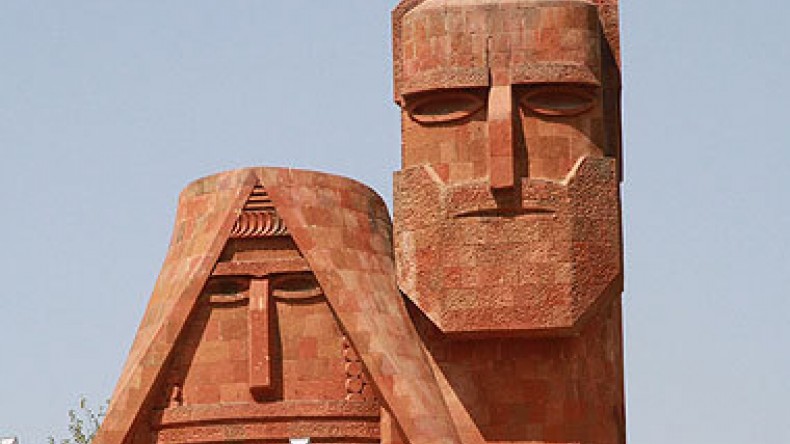
Your Central Valley: Monument ‘Tatik-Papik’ is symbol of victory in Nagorno Karabakh war
Nagorno Karabakh is a tiny country which borders Armenia to the West and Azerbaijan to the East. 150,000 people live here, nearly half in the capitol of Stepanakert, but the majority in small towns and villages. Nagorno Karabakh was at the center of a violent dispute in the early 90's. Though it was once part of Armenia, the Azerbaijanis tried to seize control. It's now independent and the monument at the border with Armenia which people call Tatik-Papik - grandmother, grandfather - celebrates that victory, the correspondent for the American broadcasting portal Your Central Valley, Stefani Booroojian, writes.
"Actually it has a big meaning because this is grandma and grandpa of our country, our traditions, our problems and we had many years ago,'' two young residents of Nagorno Karabakh explained the symbolism of the monument from their point of view. In response to the question whether the residents of Nagorno Karabakh feel proud when they see the monument, the answer was - ‘surely.’
In the material the Amaras Monastery in region Martuni is also presented, which dates back to the 5th century. There you can see an old wedding altar and the first classroom used to teach the Armenian alphabet created by Mesrop Mashtots in the same place. You can still see some of the letters carved into the stone ceiling.
20 years later, Nagorno Karabakh is independent but remnants of the war remain. A bombed out school here serves as a reminder of what once was. Nowadays a new school works there. A new 400-thousand dollar community and health center will soon be opened and replace the old ones.
"Taking into consideration geographic and geo-political things the most important thing for any government of Artsakh is to further strengthen security component of our country to make our country stronger," the president of Nagorno Karabakh said during the meeting with the journalists.
The correspondent, who also visited Armenia, writes about the world's longest aerial tramway built five years ago in the Syunik region of south-west Armenia to connect the villages of the Syunik region to serve the people of this area and also as a tourist attraction. At the end of the line is the village of Tatev and a beautiful 9th century monastery. It once housed a university in the 14th and 15th centuries, but as the wall surrounding it implies, it was built as a fortress.
Villagers say this ancient landmark and new tramway have improved their lives. "For the village it's been very important because the population has been able to find jobs. The young people have jobs now. They work for the tramway or in the restaurant," the resident of the village says.
Related:
The New York Times: Nagorno Karabakh is beautiful to look at, miserable to conduct war in
Argentinian media: Immersed in cozy landscape around Gandzasar it is hard to believe that contact line is within hour’s drive
British Journal: Nagorno Karabakh populated with Armenians could become the new wonder of world
Newsfeed
Videos






























